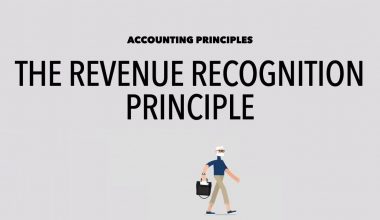In this post, we will discuss the details of an overhead cost as well as other important details, which include: what it really means, the manufacturing sector of this cost, some examples, the formula, and what overhead cost means in construction.
Overhead Cost
Basically, overhead costs are often known as overhead or just operating expenses. This simply means those expenses associated with running a business that you can’t typically link to creating or producing a product or service. These are the expenses the business incurs to stay on track or active, regardless of its success level.
You can also say that overhead costs are all of the costs on the company’s income statement. Except for those costs that are directly related to manufacturing, selling, or providing a service. For instance, a potter’s clay and potting wheel are not overhead costs because they are directly in relation to the products made. However, the rent for the facility where the potter creates his art is an overhead cost because the potter pays rent whether they create products or not.
What Is an Overhead Cost?
In a business, an overhead cost or overhead expense is the ongoing expense of operating the business. Also, when you want to talk about another way of defining what an overhead cost means. You can also say that the term overhead cost means expenditures that cannot be identified with any particular revenue unit. Unlike, operating expenses like raw materials and labor.
What this typically means is that a company’s overhead costs depend on the nature of its business. For instance, a retailer’s overhead costs or expenses will be different from a repair shop or a baker’s own. An example of this includes:
- Rent
- Utilities
- Insurance
- Salaries that aren’t job-or product-specific
- Office equipment, such as laptops or telephones,
- Office Supplies
- Office Security
Types of Overhead Cost
The types of Overhead costs can be divided into three types and they include:
- Fixed
- Variable
- Semi-variable
Fixed Expenses Overhead Cost
This type of overhead cost is the same every month for example rent. What this overhead cost typically explains is that variable costs are fixed and do not depend on how active the business is going.
Variable Overheads
These types of costs are expenses that occur with business activity levels, and they can increase or decrease depending on the level of business activity going on. This means that during a period of high levels of business activity, the expenses automatically increase. But with low business activities, the overheads will decline or even fail to exist.
Semi-variable Costs
What this type of overhead cost means is that it is unavoidable. They are those expenses that are incurred regardless of the activity level. However, these expenses can increase as business gets busier.
Note also, that it is important you track your costs because they aren’t directly related to revenues, and can drain a business unexpectedly when it is not properly checked.
Manufacturing Overhead Cost
The term “manufacturing overhead” (MOH) cost is basically the sum of all the indirect costs that your business incurs while manufacturing a product. This is summed up to the cost of the final product along with the cost of the direct material and direct labor costs. Examples of manufacturing overhead costs include depreciation of equipment, salaries, wages that you pay to factory personnel, and electricity that you use to operate the equipment.
Although, according to generally accepted accounting principles, manufacturing overhead should be included in the cost of finished goods in inventory as well as work in progress in inventory on a manufacturer’s balance sheet. also, be included in the cost of a goods income statement.
Importantly, manufacturing overhead costs are indirect costs. This is because it’s hard to link them to each product. These costs are basically put in an application to a final product by passing it on a predetermined overhead absorption rate. This rate is the manufacturing overhead cost per unit of the product or service activity, also known as the cost driver. For example, labor costs, labor hours, and machine function. Types of manufacturing overhead include:
- Indirect labor
- Indirect materials
- Utilities
- Physical costs
- Financial costs
Overhead Cost Examples
Undoubtedly, overhead costs are very essential in determining how much a business should charge for its products or services in order to generate a profit. The most common examples of overhead costs that any business incurs include:
1. Rent
This is one example of an overhead cost, which means the expenses that a business pays for using its business premises or property. In a situation when you purchase a property, the business will put down depreciation expenses. This rent is payable month to month, quarterly, or annually, depending on the agreement with the property owner.
2. Administrative costs
One of the examples of overhead costs is related to the day-to-day running of the business. However, it may include costs of paying salaries to a receptionist, accountant, cleaner, etc. We treat this as an overhead cost since you can directly link it to a particular function of the business. And also, they do not directly result in the generation of profit; rather, the administrative costs support the general running of the business. This includes audit fees, legal fees, employee salaries, and entertainment costs.
3. Utilities
Utilities are mainly the basic services that a business requires to carry out its main functions. Examples include water, gas, electricity, internet, sewer, and phone service. A business can reduce its utility expenses by negotiating for smaller rates from suppliers.
4. Insurance
This is typically a cost a business incurs in order to protect itself from any financial loss. There are many types of insurance, depending on the risk and the loss your business may face. For example, risks such as flood, damage, or theft. Another type of insurance is professional liability, which is, insurance that protects the business from liability arising from malpractice.
5. Sales and marketing
This is an example of an overhead cost in business. Sales and marketing overheads are costs businesses incur in the process of marketing the company’s products or services to customers. Examples include promotional materials, trade shows, paying for advertisements, wages of salespeople, and commissions for sales staff. Because all these activities are channeling towards promoting the products or services to be popular among consumers.
6. Repair and maintenance of motor vehicles and machinery
You generate maintenance overheads for businesses that depend on motor vehicles and equipment in their day-to-day activity. Examples of these businesses include distributors, parcel delivery services, landscaping, transport services, and equipment leasing. So, because motor vehicles and machinery are a necessity, the business needs to maintain them from time to time as well as repair them whenever they break down.
Overhead Cost Formula
The first and basic formula for calculating your overhead costs is to have good knowledge of them as well as arrange them properly in the right categories. This is because overhead costs are a basic element of operating a business and they reflect the expenses that companies have that they need, to run the day-to-day operations of the business. So, you can’t get rid of overhead costs; they’re fundamental to your business and you need to understand them so as to reduce expenses to make a profit.
Step by Step Formula for Overhead Cost
In this part of this post, we will be discussing the formula for calculating your overhead costs, which includes;
#1. List all of the expenses
Firstly, you need to make ready a complete list of all your business costs. The list should be thorough and contain items like rental space for your business, utilities, taxes, and building upkeep.
#2. Categorize each expense
When you categorize your overhead cost, it’s not only straightforward but also easy to understand. It’s important to note and remember that some items don’t fall easily into one particular category or the other, so you must make some judgment calls.
#3. Sum the overhead costs
Sum up the month-to-month overhead costs to calculate the total overhead cost expense. Consequently, the sum of funds is what you require for running your business.
#4. Calculate the overhead rate
The overhead percentage is typically the sum your organization spends on producing an item or even providing services to clients. You can calculate this rate by dividing the indirect costs by the direct ones and finally multiplying them by 100. If at the end of this calculation, you get a lower overhead rate, it simply shows efficiency and higher profits.
#5. Compare to sales
When setting costs and making budgets, for your business, you should get to know the percentage of any dollar dedicated to overheads. If you want to calculate the overhead costs compared to sales, you need to divide the month-to-month overhead cost by the month-to-month deals and multiply by 100 to get your result.
6. Compare to labor cost
To find out how efficient your business is as well as the resources you consume. You have to calculate the overhead cost as a percentage of the labor cost. Because, when the percentage is lower, then your company is using its resources effectively. Then, divide the entire overhead cost by the entire labor cost for the month and multiply them by 100 to arrive at its percentage.
The general formula for an overhead cost is: The general formula is thus; An overhead cost =Allocation measure/ Indirect costs
Overhead Cost in Construction
The meaning of overhead can basically mean the cost of running a business. In construction, the overhead cost typically includes the expense of subcontractors, machinery, equipment, insurance, office staff, office supplies, vehicles, etc. This overhead cost in construction can be in two sections: direct and indirect. While direct overhead costs are allocable to a special job like equipment and rental, indirect costs are not. Like, as the cost of the office weekend party or getaway. Either way, the overhead cost of construction is one of the biggest expenses in the cost of running a business.
Having knowledge of how construction overhead and profit work is important to developing your business. Because with unreasonable expectations, you might price yourself out of competition with fellow contractors. At the same time, if it’s too low a bid, no one will take you seriously.
Tips to Manage Your Overhead Cost in Construction
Note that overhead costs can pile up quickly in any business, but more quickly in construction. This is why you need to fully understand your overhead cost in order to maximize profit. Now, one of the best ways you can maximize profit is to rein in overhead expenses and then make productive use of your idle capacity. Search for ways to sell or lease your equipment which your not using at the moment and turn this way into a new source of cash flow.
Again, you can cross-train employees to develop skills in many tasks just to increase productivity and make the most out of each worker. Point out the problems of your projects, like delayed delivery of basic equipment. In this case, solve the problem by working with suppliers to avoid such problems.
Also, consider outsourcing your information technology, accounting, and office tasks is a way of reducing the cost of staff. Lastly, check your fleet needs because maybe you can make use of a smaller number of company-owned vehicles. These are typically some solutions to your overhead costs as construction personnel.
Is salary an overhead cost?
Since these expenses must be covered regardless of the company’s sales and earnings, they are regarded as overheads. Salary differs from pay since it is unaffected by working hours and time and will always be the same.
What is overhead cost also known as?
A corporation must commit to paying overhead costs, commonly referred to as fixed costs or just overheads, regardless of the quality of its output.
What is the opposite of overhead cost?
Overhead and operating expenses are the two main types of costs that a firm may incur. Operating costs are those incurred by a business as a result of daily operations. On the other side, operating costs are what it costs to run the company.
How to calculate overhead?
Divide the indirect costs by the direct costs, then multiply the result by 100 to get the overhead rate. A 20% overhead rate indicates that 20% of sales are spent on the creation of goods or the provision of services. Efficiency and more earnings are shown by a lower overhead rate.
Is overhead cost fixed or variable?
There are two types of overhead costs: fixed and variable. Usually, there is little fluctuation in the overhead with changes in the manufacturing of a particular product. As a result, it is regarded as a fixed cost.
Conclusion
Overhead costs simply mean the cost of operating a business. Every business encounters this cost because we all have the expenses our own business expenses for the day-to-day running of the business. Now while some business overhead costs is minor, others have a large overhead costs like manufacturing and construction. Once you apply the formula of an overhead cost in your business, no matter the method you use, you will arrive at the result of this cost for your business, so go ahead and use your business as one of the examples to understand this cost.
Faqs
What are overhead costs?
Overhead expenses are what it costs to run the business, including rent, insurance, and utilities. Operating expenses are required to run the business and cannot be avoided. Overhead expenses should be reviewed regularly in order to increase profitability.
How do you calculate overhead cost?
To calculate the overhead rate, divide the indirect costs by the direct costs and multiply by 100. If your overhead rate is 20%, it means the business spends 20% of its revenue on producing goods or providing services. A lower overhead rate indicates efficiency and more profits.
Is salary considered an overhead cost?
A business’s overhead refers to all non-labor-related expenses, which excludes costs associated with manufacture or delivery. Payroll costs — including salary, liability, and employee insurance — fall into this category. Overhead expenses are categorized into fixed and variable, according to Entrepreneur.
What are examples of overhead costs?
Some examples of overhead costs are:
- Rent.
- Utilities.
- Insurance.
- Office supplies.
- Travel.
- Advertising expenses.
- Accounting and legal expenses.
- Salaries and wages.
Related Articles
- COST OF GOODS MANUFACTURED: Formula, Schedule, & How to Calculate Guide
- Cash Flow Statement Indirect Method: Overview, Examples, Calculations
- Cash Flow Statement Direct Method: Overview, Examples, Pros & Cons
- Financial Compensation: Definition and Forms of compensation Explained!
- Business Utilities: Cost and Comparison of Utilities for Business in UK
- HOW TO CALCULATE MILEAGE FOR TAXES: All You Need






